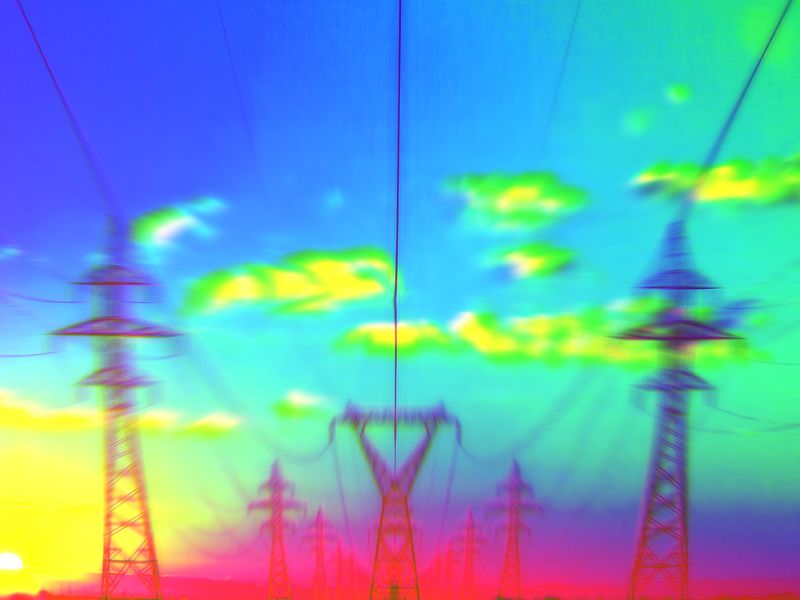Energy equals life. It warms, cools, and lights our homes. It moves the trucks that bring our groceries. It fuels the chips that drive the AI revolution. Energy can be considered a human right, and unless we transition to a zero-emissions economy — energy will kill us.
The foundation of a zero-emissions economy lies in renewable energy sources and it requires a shift in how we consume energy. Unlike fossil fuel-based energy, they do not produce energy on demand, but whenever the sun shines and the wind blows. Therefore, to achieve the net-zero goal ASAP, we must find a way to actively integrate end consumers into the energy market.
This op-ed is part of CoinDesk’s new DePIN Vertical, covering the emerging industry of decentralized physical infrastructure.
Previous attempts to do this have largely failed. Large municipal utilities paid flat rates to households that were willing to participate in demand response programs where you were essentially expected to shut off your energy-consuming devices when prompted by a centralized signal, often an SMS. But these methods are too imprecise and costly to scale. They struggle because they are implemented within a system that is not designed for the unique demands of renewable energy—a system built over more than a century to accommodate fossil fuels. The fossil system is characterized by deep verticality and bilateral contracts between some hundred players along supply chains that encircle the entire planet. But what we need is a system that is horizontally structured around locally-produced energy, multilaterally shared between billions producers and active consumers.
History proves that it can be done. At the dawn of the electricity era, power grids were strictly a city thing, as rural areas lacked the infrastructure to go connected and weren’t profitable enough for electricity providers due to their sparse population. Therefore, many communities around the world build the required infrastructure themselves, organizing in decentralized cooperatives. Citizens were incentivised to join because they directly reaped the benefits of this new infrastructure.
As our use of fossil fuels accelerated, we began consuming these resources at a rate far exceeding their natural formation, burning in a single year what took millions of years to accumulate in the Earth’s crust. This caused the energy industry to become increasingly complex, and consumers increasingly detached from the origin and impact of their energy use.
In the future, stabilizing the energy system will rely less on physical and more on virtual infrastructure, i.e. the real-time exchange of information among all market participants. And once again, the infrastructure to realize this is not in place.
As we stand on the threshold of a climate disaster, it’s time to flex the power of the community once again. There’s no point in looking up to Big Energy or ever-bickering governments — in this story, the everyman is the hero. And the good news is, this time we have the technology that marries the power-to-the-people approach with the borderless scale Big Energy can only dream of.
The solution is called DePIN, or Decentralized Physical Infrastructure Networks. DePINs are “decentralized applications that use tokens to incentivise communities to build physical infrastructure networks (think mobility, electric vehicle charging, telecoms etc.) from the ground up.”
They are uniquely suited to address the complexities of the modern energy landscape.
Unlike traditional systems, DePINs are not constrained by the limitations of centralized control. They operate on a blockchain-based framework that incentivizes participation through cryptographic tokens, ensuring that every contributor, whether a homeowner with solar panels or a small business with battery storage, can participate in the energy market and be rewarded for their contributions.
This decentralized approach facilitates a more resilient and flexible energy system, where supply and demand can be balanced in real-time. The crucial components here are connected devices — smart fridges, smart ACs, smart anything you have at home (no, your pets don’t count) — and the anonymised data of all network participants. When the grid is struggling, individual households can automatically amp up or down their use of electricity, thus helping make the overall grid more resilient, and get token rewards through trustless smart contracts.
DePINs can also enable peer-to-peer energy trading, where excess energy generated by one participant can be sold directly to another, bypassing traditional utility companies. This not only reduces output waste but also democratizes energy access, allowing individuals to take control of their energy usage and contribute to the overall stability of the grid.
The success of the Helium Network in building a decentralized wireless network and the Silencio Network in environmental monitoring demonstrates the potential of DePINs beyond the energy sector. These networks have rapidly scaled by incentivizing users to contribute to the network’s infrastructure, proving that a decentralized model can work on a large scale.
In the energy sector, similar principles can be applied to create a decentralized energy grid. Networks like Combinder.io serve as a prime example of an energy DePIN that connects consumers and producers in a seamless, tokenized ecosystem. By leveraging existing household equipment such as smart meters, solar panels, and battery storage, this network allows users to participate in demand response programs and peer-to-peer trading, unlocking new revenue streams and contributing to a more sustainable energy system.
The implications of not embracing DePINs in the energy sector are severe. Without a decentralized approach, the energy transition will continue to face significant obstacles, from inefficient resource allocation to the inability to fully integrate renewable energy sources. This could lead to continued reliance on fossil fuels, further exacerbating the climate crisis.
The path to a sustainable, zero-emissions future is clear: we must transform our energy system to empower individuals and communities to take an active role and accelerate the energy transition.
In addition to the significant benefits for the health of our planet, this approach will also create enormous economic opportunities. A decentralized network that enables the efficient exchange of energy can unlock billions of dollars in value. It provides strong incentives for households and businesses to invest in renewable energy and energy-efficient technologies, ensuring that the financial rewards are equitably distributed across society.
Energy is the lifeblood of modern society, and how we manage it will determine our future. DePINs offer the most promising path forward, enabling us to meet our net-zero goals while creating a more equitable and resilient energy system for all. It’s time to take the energy back into our own hands.
Note: The views expressed in this column are those of the author and do not necessarily reflect those of CoinDesk, Inc. or its owners and affiliates.

